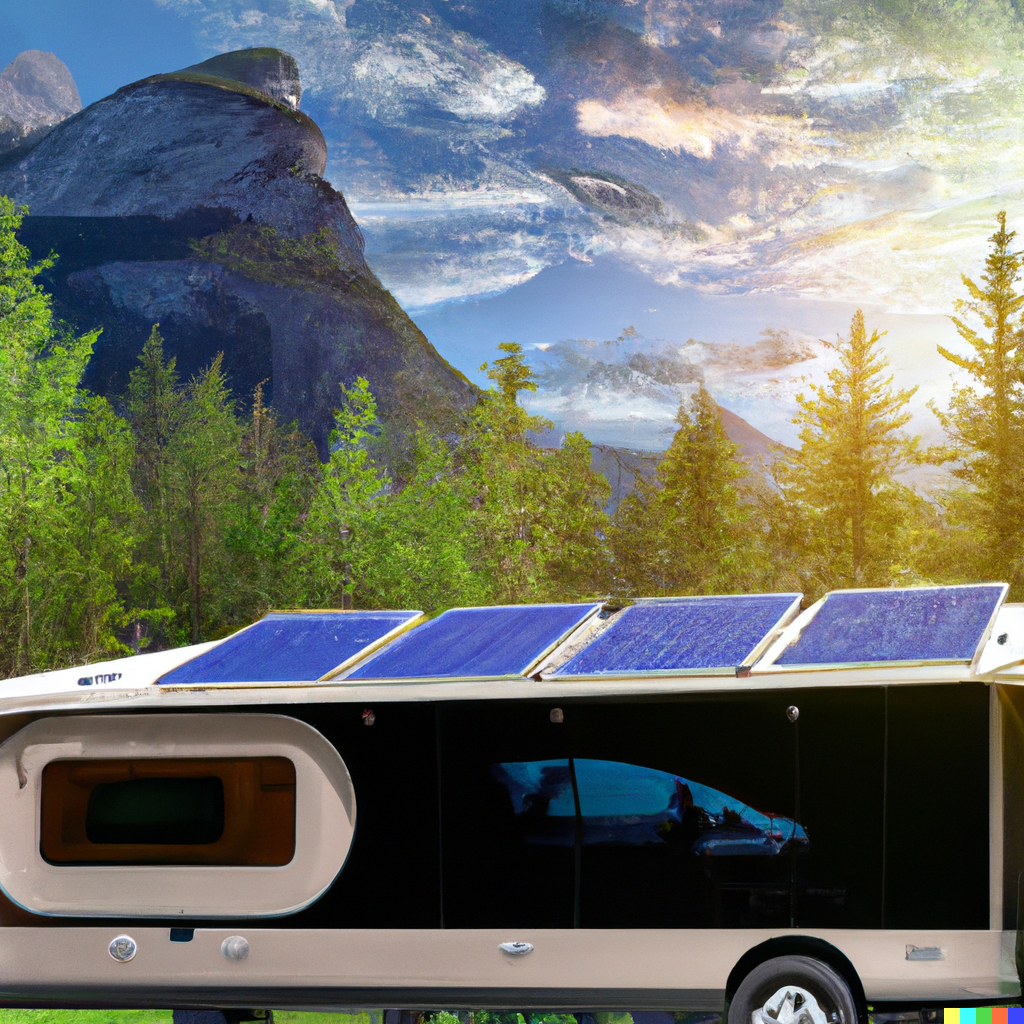Off-grid living offers the freedom to explore the world at your own pace, bringing the comforts of home along for the ride in your RV. Among the many challenges of sustainable RV living, sourcing reliable power tops the list. That’s where solar energy comes into play, providing an eco-friendly solution to keep your RV powered up no matter where you roam. In this guide, we’ll delve into the intricacies of RV solar selection, comparing the different types of solar panels to help you identify the best RV solar panels for your adventures.
Harnessing Solar Energy Off-Grid: The Essentials
Solar power serves as an indispensable asset for RV life. It provides a renewable energy source, allowing you to extend your travels without worrying about the next power hook-up. This freedom to roam without power restrictions is why many RV owners opt for the best RV solar panels to meet their energy needs.
A Deep Dive into Different Types of Solar Panels
Solar panels are the backbone of a solar energy system, providing the means to convert sunlight into electricity. When choosing the best RV solar panels, it’s important to understand the three primary types: Monocrystalline, Polycrystalline, and Thin-Film. Monocrystalline solar panels, made from a single crystal structure, are known for their high efficiency and durability, often making them the go-to choice for those who prioritize performance and have a higher budget. On the other hand, polycrystalline solar panels are characterized by their blueish hue and square cells and offer a more budget-friendly option. They have slightly lower efficiency but balance cost and performance well. Lastly, Thin-Film solar panels, the most lightweight and flexible of the trio, are ideal for unconventional mounting spaces or curved surfaces. They come at a lower cost but offer the least efficiency of the three types. While the choice largely depends on individual needs, constraints, and preferences, understanding the distinguishing characteristics of each type can make the RV solar selection process much smoother
Monocrystalline Solar Panels
Example:
- Renogy 100 Watt 12 Volt Monocrystalline Solar Panel
- Rich Solar 200 Watt 12 Volt Monocrystalline Solar Panel
- Eco-Worth 100 Watt 12 Volt Monocrystalline Solar Panel
Pros:
- Highest efficiency rate
- Durable and long-lasting
- Excellent performance in low-light conditions
Cons:
- Higher cost compared to other types
- Performance can drop if partially covered (e.g., by shade or dirt)
Price range: Monocrystalline solar panels typically range from around $100 to $1,000 per panel, depending on their size, quality, and brand
Polycrystalline Solar Panels
Example:
- Newpowa 200 Watt 12 Volt Polycrystalline Solar Panel
- ACOPOWER 100 Watt 12 Volt Polycrystalline Solar Panel
- Rich Solar 200 Watt 12 Volt Polycrystalline Solar Panel
Pros:
- Lower cost than monocrystalline panels
- Good efficiency rate
Cons:
- Lower efficiency compared to monocrystalline panels
- May require more roof space to match the power output of monocrystalline panels
Price range: Prices for polycrystalline panels typically range from around $75 to $250 per panel, with higher-capacity or premium panels costing more.
Thin-Film Solar Panels
Example:
- Renogy 100 Watt 12 Volt Flexible Solar Panel
- Topsolar Flexible 100 Watt 12 Volt Solar Panel
- ECO-WORTHY Flexible 130 Watt 12 Volt Solar Panel
Pros:
- Most affordable option
- Flexible and lightweight, offering versatile mounting options
Cons:
- Lowest efficiency rate among the three types
- Require more roof space for equivalent power output
Price range: Thin-film solar panels usually cost between $100 to $500 per panel, with the price increasing for more advanced or larger panels.
Choosing the Best RV Solar Panels for Sustainable Off-Grid Life
Selecting the best RV solar panels requires balancing your power requirements, available roof space, and budget constraints.
Efficiency and Power Needs
Consider the power consumption of your appliances. Higher consumption requires more efficient panels – likely monocrystalline. Lower power usage might work with polycrystalline or thin-film panels.
Space and Weight Limitations
Your RV’s roof space and weight capacity are crucial factors. Monocrystalline panels could be ideal if you have limited space but can handle extra weight. Thin-film panels might be a good fit if your roof is spacious but can’t support much weight.
Budget
Monocrystalline panels are the most efficient but also the most expensive. Polycrystalline panels offer a middle ground, while thin-film panels are the most affordable.
Remember, solar panels are just one part of an RV solar system. Additional costs include charge controllers, batteries, inverters, mounting hardware, and installation fees.
Choosing the best RV solar panels for sustainable RV living can seem overwhelming, but a clear understanding of the different panel types can help you make an informed decision. Monocrystalline panels offer the highest efficiency, polycrystalline panels balance cost and performance, and thin-film panels are a versatile, affordable choice. No matter your preference, embracing solar energy off-grid will undoubtedly enhance your RV life. Enjoy the freedom of the open road powered by the sun!
Solar Powered
Sustainable Off-Grid RV Solar Solutions
Designing, installing, and optimizing custom RV solar solutions for efficient, green, off-grid experiences.





One Comment